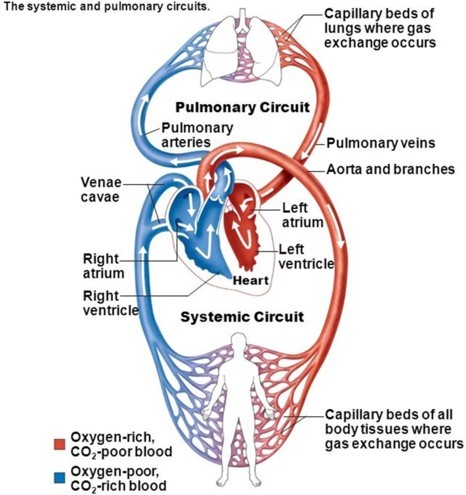Hematocrit is:
The color of plasma.
A disease.
A clotting factor.
The percent of red blood cells in a blood sample.
The Correct Answer is D
It is measured as part of a blood test and depends on the number and size of red blood cells. It is normally 40.7–50.3% for males and 36.1–44.3% for females.
Red blood cells contain hemoglobin, which transports oxygen and nutrients to the cells and tissues of the body.
Choice A is wrong because the color of plasma is not hematocrit.
Plasma is the liquid part of blood that carries blood cells and other substances.
Choice B is wrong because hematocrit is not a disease.
It is a test that can indicate conditions such as anemia or polycythemia.
Choice C is wrong because hematocrit is not a clotting factor.
Clotting factors are proteins that help the blood to clot and prevent bleeding.
Nursing Test Bank
Naxlex Comprehensive Predictor Exams
Related Questions
Correct Answer is A
Explanation
Capillary walls consist of a single layer of epithelial cells, and they exchange substances in the blood for substances in the tissue fluid surrounding body cells.
This single layer of cells is called the endothelium and it forms the barrier between the blood and the interstitial fluid.
The endothelium can be either continuous or fenestrated, depending on the tissue type and function.
The capillaries are very thin and allow red blood cells to flow through them single file.
The capillaries also have a layer of a glycoprotein called the glycocalyx that covers their luminal surface.
Choice B. False is wrong because it contradicts the definition and structure of capillaries.
Capillaries are not made of multiple layers of cells, nor do they prevent the exchange of substances between the blood and the tissue fluid.
Correct Answer is D
Explanation
The systemic circuit sends oxygen-rich blood to the tissues.

It is part of the circulatory system that carries blood away from the heart, delivers it to most of the organs and tissues, and returns it to the heart again.
Choice A is wrong because it describes the pulmonary circuit, which brings oxygen-poor blood from the heart to the lungs.
Choice B is wrong because it is the opposite of what the systemic circuit does.
The systemic circuit brings oxygen-rich blood from the heart to the tissues, not from the tissues.
Choice C is wrong because it is also the opposite of what the systemic circuit does. The systemic circuit sends oxygen-poor blood to the heart, not from the heart.
Whether you are a student looking to ace your exams or a practicing nurse seeking to enhance your expertise , our nursing education contents will empower you with the confidence and competence to make a difference in the lives of patients and become a respected leader in the healthcare field.
Visit Naxlex, invest in your future and unlock endless possibilities with our unparalleled nursing education contents today
Report Wrong Answer on the Current Question
Do you disagree with the answer? If yes, what is your expected answer? Explain.
Kindly be descriptive with the issue you are facing.
